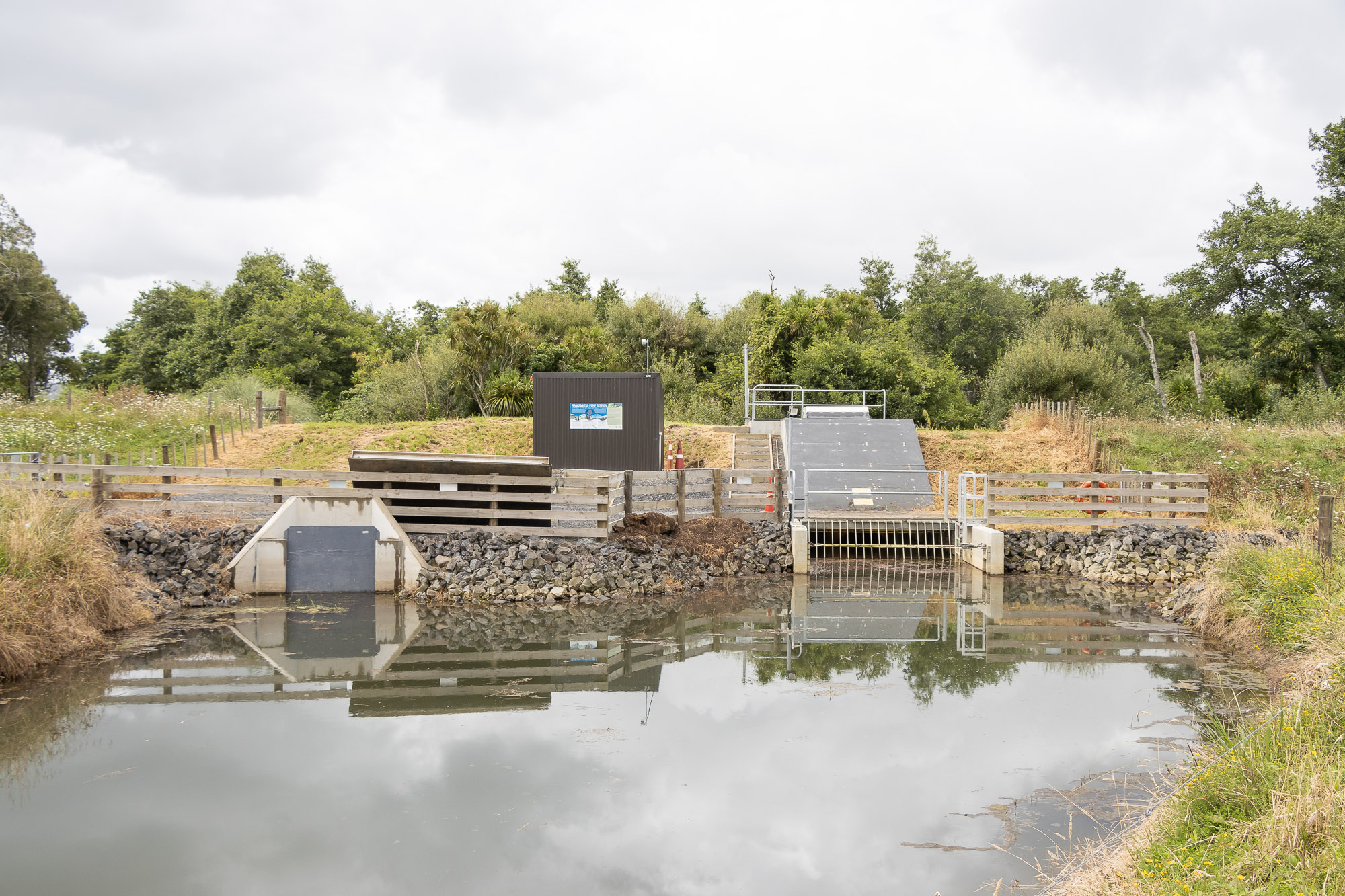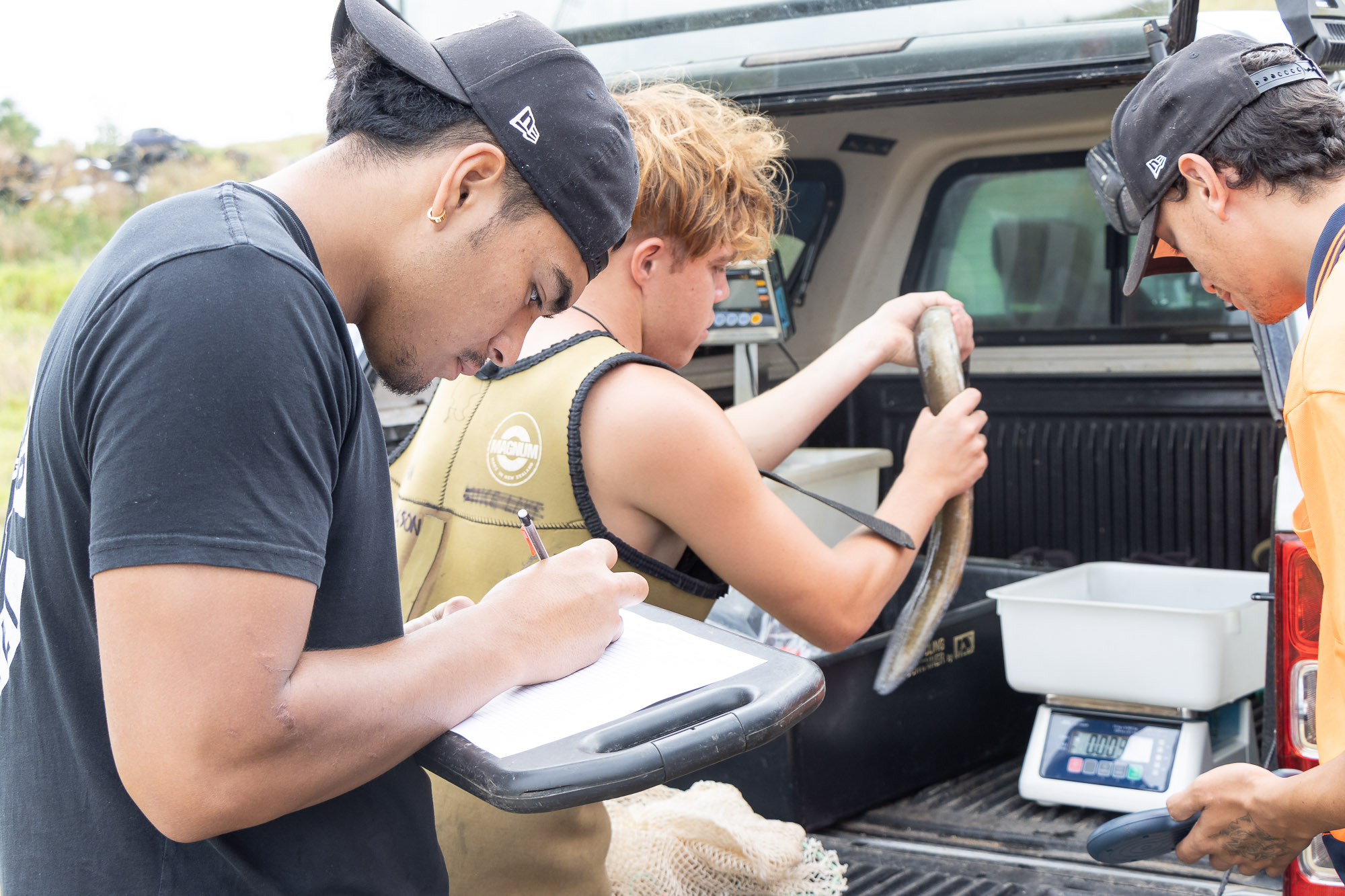“Tuna were a part of the daily diet of my people, but they are taonga and at this point of time they are something we want to support and sustain.”
– Roimata Minhinnick, Ngāti Te Ata

When Ngāti Te Ata was told by Waikato Regional Council that it wanted to put the outlet of a new fish-friendly pump on the iwi’s land, they jumped right on board.
“As an iwi, and as a landowner, it was an immediate attraction because of the kaupapa,” says Roimata of Ngāti Te Ata, pictured.
Water pumped through the Mangawhero pump station enters a lake on the the iwi’s 10-hectare property before flowing into the Waikato River. The site is adjacent an old Ngāti Te Ata pa.
“Just before lockdown, we turned the lake into a tuna [eel] reserve because we weren’t finding any tuna in traditional places, including the Mangawhero awa, and those we did find were small,” says Roimata.

“We thought there is a problem here and maybe a reserve would help.
“The old pump prevented the migration of tuna, so we’re not surprised at their shortfall in the lake.
“When we were approached by WRC to explore working together to replace the old pump with one that would allow their migration, it was a no brainer.
“We know the new pump is a success overseas, although testing has been limited to the size of eels abroad, which are smaller.”
Ngāti Te Ata has been there every step of the journey since Waikato Regional Council received $4.48 million from Kanoa – Regional Economic Development & Investment Unit, administered by the Ministry of Business, Innovation and Employment, towards upgrading five pumps in Waikato catchments to enable safe downstream passage of native fish.

That includes developing a monitoring programme to test the success of the 10-metre by 1.6-metre screw pump, which was built in the Netherlands and installed following a cultural ceremony by Ngāti Te Ata in July last year.
In Europe, enclosed Archimedes screw pumps have proven to be 100 per cent fish friendly.
The enclosed screw design means the pump should not inflict damage on fish.
If the pump is proven successful, this technology could have significant benefits for tuna populations in pumped catchments throughout New Zealand.
One-hundred and sixty-four shortfin eels have been tagged ahead of the migration season, which usually begins around the start of February.
The iwi provided local knowledge on best locations to capture the large tuna and helped with the bank-side handling of nets and the measuring and recording of tuna as part of the tagging process.
A sock net has been attached to the outlet of the Mangawhero pump to capture any fish that pass through, and a passive integrated transponder (PIT) system is in place at the site to assess the behaviour of the tagged tuna at the pump.
All fish captured in the sock net will be measured and checked for any injuries.
Healthy tuna will be transferred to holding nets to ensure no internal injuries were suffered and then released downstream, to safely enter Ngāti Te Ata’s lake and have access to the sea.
Historically, Ngāti Te Ata developed sophisticated sustainable practices of containing, catching and processing of tuna.
These traditional practices included constructing pa tuna/eel weirs to catch migrating eels and tuna nohonga, places especially set aside for tuna habitation where tuna could be kept and easily retrieved.
“Tuna were a part of the daily diet of my people, and are taonga, but at this point of time they are something we want to support and sustain,” says Roimata.
He says the council’s Mangawhero project was an opportunity for Ngāti Te Ata’s young people to get involved and learn to take care of their environment, as kaitiaki.
“We’re interested in not just restoring tuna numbers but in improving the water quality in the catchment and revitalising the environment.
“We will be doing some riparian planting around the lake, working with Te Whangai Trust in Pukekohe which helps youth in trying circumstances get back on their feet, and enable schools to get involved.”
The council shares the iwi’s vision and is committed to supporting initiatives to build iwi capacity and capability in environmental science, mātauranga Māori and natural resource management.
Testing of the screw pump is part of Pathways to the Sea, a research and strategy development programme by the regional council to help manage flood pump impediments to fish passage and which will lead to the development of a regional fish passage strategy.
Pathways to the Sea project manager Michelle White says the issue of fish passage is not unique to the Waikato, “but we do have the largest number of flood pumps in New Zealand, and therefore understanding how we can avoid, remedy or mitigate the impact these assets have on our native fish is a priority for our council”.
The council is also working with MacEwans Pumping Systems and Callaghan Innovation to develop a fish-friendly pump to replace existing MacEwans PPF axial pumps – found widely in New Zealand – without the need to make any civil structure modifications to pump stations.
Read more about the council’s fish passage pumps project here.
Eel types
Longfin eel
- Classified as declining.
- Can live to about 100 years (average 35-52) and grow up to 2 metres in length.
- Legendary climbers so usually found in rivers and inland lakes, well inland.
- Relatively intolerant of pollution.
- Reproduce only once, somewhere near Tonga.
- Before migrating, their head shape becomes less dome-like (more tapered) and their eyes enlarge to twice the size.
Shortfin eel
- Not threatened.
- Can live up to about 60 years (average 18-23) and grow up to 1 metre in length.
- Live mainly in lowland waterways.
- Relatively pollutant tolerant.
- Reproduce only once, somewhere near the western subtropical Pacific Islands.
- Before migrating, their head shape becomes less dome-like (more tapered) and their eyes enlarge to twice the size.





